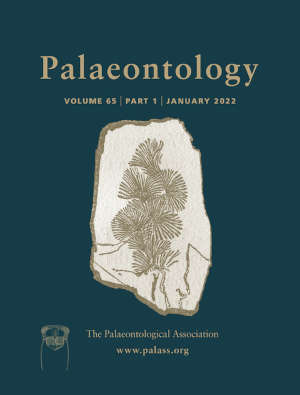Article: First application of dental microwear texture analysis to infer theropod feeding ecology
Publication: Palaeontology
Volume:
65
Part:
6
Publication Date:
2022
Article number:
e12632
Author(s):
Daniela E. Winkler, Tai Kubo, Mugino O. Kubo, Thomas M. Kaiser, and Thomas Tütken
Abstract
Abstract Theropods were the dominating apex predators in most Jurassic and Cretaceous terrestrial ecosystems. Their feeding ecology has always been of great interest, and new computational methods have yielded more detailed reconstructions of differences in theropod feeding behaviour. Many approaches, however, rely on well-preserved skulls. Dental microwear texture (DMT) analysis is potentially applicable to isolated teeth, and here employed for the first time to investigate dietary ecology of theropods. In particular, we test whether tyrannosaurids show DMT associated with more hard-object feeding than compared to Allosaurus; this would be a sign for higher levels of osteophagy, as has often been suggested. We find no significant difference in complexity and roughness of enamel surfaces between Allosaurus and tyrannosaurids, which conflicts with inferences of more frequent osteophagic behaviour in Tyrannosaurus as compared to other theropods. Orientation of wear features reveals a more pronounced bi-directional puncture-and-pull feeding mode in Allosaurus than in tyrannosaurids. Our results further indicate ontogenetic niche shift in theropods and crocodylians, based on significantly larger height parameters in juvenile theropods which might indicate frequent scavenging, resulting in more bone–tooth contact during feeding. Overall, DMT is found to be very similar between theropods and extant large, broad-snouted crocodylians and shows great similarity in feeding ecology of theropod apex predators throughout the Jurassic and Cretaceous.
